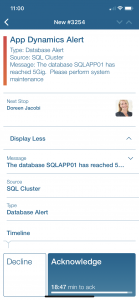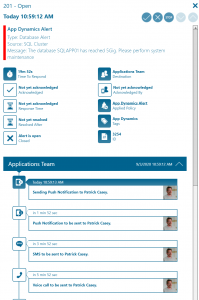AppDynamics
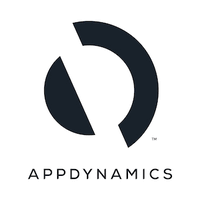
Mobile alerting with tracking & escalation for AppDynamics
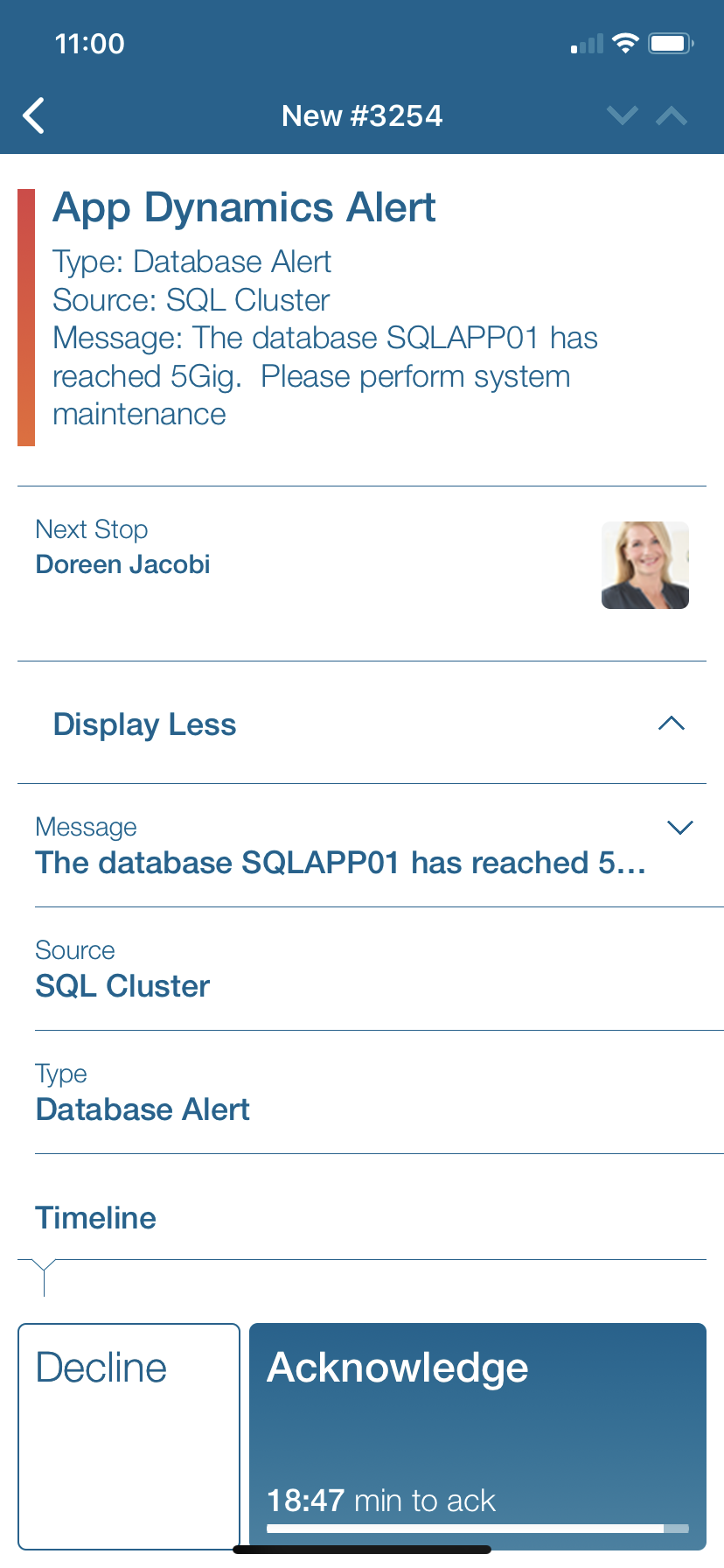
![]() Why Enterprise Alert
Why Enterprise Alert
App Dynamics agents sit across your entire application ecosystem and supporting infrastructure, notifying controllers of real-time performance. Agents send performance data to controllers, and your application performance is visualized through the controller UI. These data collectors and analytics are great for users sitting at the control desk. Enterprise Alert is a great extension because the incoming events that trigger alert policies will alert technicians of critical events through email, push, sms and voice calls – even targeting your on-call personnel.
![]() How it Works
How it Works
Creating a HTTP POST template directed at a dedicated Enterprise Alert REST API link will provide instant connection between the systems.
![]() Integration Capabilities
Integration Capabilities
- Forwards AppDynamics information to Enterprise Alert for mobile alerting
- Uses REST API to connect to your Enterprise Alert instance
- Staff can acknowledge and take ownership for critical events that occur
- Communicate within an alert to address a problem
- Alerts are escalated in case of no response
- On-call scheduling to alert the right people at the right time
![]() Scenarios
Scenarios
- Server Monitoring
- Resource Monitoring
- Network Analytics
- Application Monitoring
How to Integrate
First, you need to ensure that Enterprise Alert can receive the data being sent from App Dynamics. The new event source will be a REST API. For more details on creating this source please see our online guide here.
Once you have the API configured and a URL built, we can apply this to HTTP Request Templates within App Dynamics. Follow the steps here to configure the template.
- From the Top Menu Click on Alert & Respond
- Select HTTP Request Templates
- Add a new template by clicking on the + sign
- You will need to give it a Name, Select POST and populate the URL with the one created before. There is no authentication needed. The payload will need to be created based on your business needs. Enterprise Alert does not care what is sent here, as long as it is formatted properly. In this example we will use a static payload to demonstrate the connection.
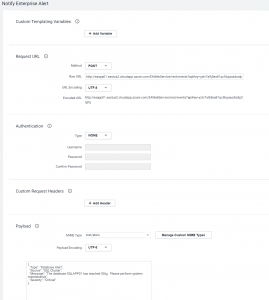
- Once the template is saved, you can access it again to test it out. Click on Test will send the payload information into Enterprise Alert as an Incoming Event.
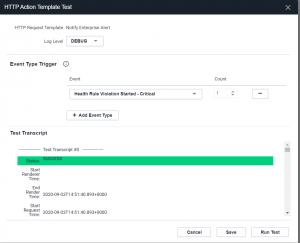

- You will want to build an alert policy based on these conditions. The following screens walk through that process.
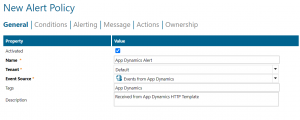

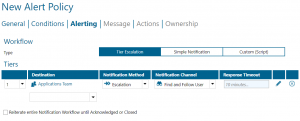
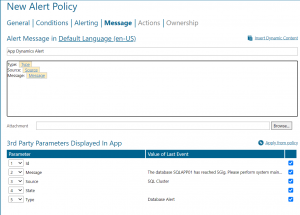
- You will need to apply this template to your existing Policies within App Dynamics. The next time the template is triggered Enterprise Alert will hit the previously created Alert Policy and notify team members.
Notifications within the Enterprise Alert mobile app
Enterprise Alert comes complete with a mobile app allowing for all critical alert details to be seen from anywhere. Users can acknowledge and take ownership of alerts and with remote actions, even resolve them. Team members collaborate with their peers so that even if an on-call person is not the SME, that person is easily within reach via voice call, text or email.
A centralized Alert Center can be viewed from the web portal. All alerts, whether active, overdue or closed are visible to EA admins. Ownership and even delegation is as easy as drag-and-dropping the alert to the person/team.
